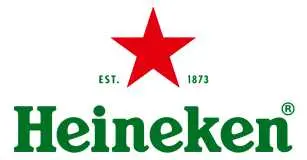As a deactivated form of yeast, inactive dry yeast, sometimes called nutritional yeast, is more commonly employed as a culinary spice and supplement than as a leavening agent. Inactive dry yeast is produced by heating yeast cells to death, in contrast to active yeast, which is used to raise dough. It keeps vital nutrients in the dough without causing it to rise. For vegans and those trying to increase their nutrient intake, it's a popular option because of its high B-vitamin, fiber, and protein content.
Europe Inactive Dry Yeast Market Driving Factors and Challenges
Drivers: Consumers' changing lifestyles and increasing levels of disposable income are likely to drive quicker growth in the processed food and bakery industries in the region. In addition, the local market for instant dry yeast is growing as a result of an increase in the consumption of processed foods, alcohol, and yeast's nutritional potential. Therefore, it is anticipated that in the next years, these elements will offer lucrative opportunities for the market expansion of instant dry yeast.
Moreover, a major contributing factor to this rising demand is the growing emphasis placed by suppliers in this sector on offering products of the highest caliber. As such, the world's deactivated dried yeast is reaping tremendous earnings from the animal feed business.
Challenges: The European inactive dry yeast market needs to overcome a number of challenges in order to maintain consistent growth. The rivalry from alternative fermentation products and natural additions, which often offer better functionality or financial advantages, is one major issue. Food safety and labeling regulations can also increase the cost of compliance and make it more difficult for companies to enter new markets. A factor that impacts pricing stability as well as production costs is the price volatility of raw materials, which includes agricultural products used in yeast culture. Businesses are being compelled to make investments in more traceable and sustainable supply chains due to growing consumer awareness of and demand for ingredient sourcing transparency.
Impact of COVID-19 on Europe Inactive Dry Yeast Market
The COVID-19 pandemic had a significant effect on the European inactive dry yeast market in a variety of ways. Early in the outbreak, disruptions in the production process and supply chain led to shortages and delays in product availability. Producers were unable to produce as much yeast due to lockdowns and restrictions, and product distribution became more challenging due to logistical problems. First, shifts in consumer behavior, such as an increase in baking and cooking at home, supported the demand for inactive dry yeast. However, as the pandemic's economic consequences extended, a drop in consumer spending and changes in eating habits caused demand to plummet in a number of market groups.
Europe Inactive Dry Yeast Market Key Players:
The market study provides market data by competitive landscape, revenue analysis, market segments and detailed analysis of key market players are; ACH Food Companies, Inc. (Associated British Foods), Angel Yeast Co., Ltd., Biorigin, Chr. Hansen Holding A/S, Foodchem International Corporation, Kerry Group PLC, Koninklijke DSM N.V., Lallemand, Inc., Lesaffre Group, Pakmaya, Others.
Europe Inactive Dry Yeast Market Segmentation:
By Product: Based on the Product, Europe Inactive Dry Yeast Market is segmented as; Feed Grade, Food Grade.
By Application: Based on the Application, Europe Inactive Dry Yeast Market is segmented as; Food, Fermentation.
By Region: This research also includes data for Eastern Region, Western Region, Northern Region, Southern Region.
This study also encompasses various drivers and restraining factors of this market for the forecast period. Various growth opportunities are also discussed in the report.






















